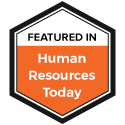3 minute read:
Several weeks into quarantine and social distancing, many are wondering when the country will reopen.
As of April 20, 42 states had placed shelter in place orders. Roughly 316 million Americans are being affected by the orders and many of those are experiencing a varying degree of change regarding their employment status. While some states have begun to lift those restrictions, the process of rebuilding the economy will be long and arduous.
Employers, we have discussed how this currently affects your ACA compliance status, namely how the COVID-19 Pandemic could impact an employer’s ALE status in 2021, how the Rule of Parity can affect offers of coverage during temporary layoffs, and the different questions employers should ask themselves as they are considering workforce management solutions.
Something just as important that we have yet to touch on however, is how these layoffs, furloughs, and employment classification changes manifest themselves in the annual 1094-C and 1095-C filings with theIRS.
Form 1095-C summarizes the information regarding healthcare offered to an ALE’s full-time employees and their dependents. The changes to your workforce, and more specifically your employees, need to be accurately reflected in the 1095-Cs. If you’re unsure of the coding to use, click here to learn about the different scenarios.
A common misconception is that when employers temporarily reduce their workforce, the employee no longer requires a 1095-C schedule. That’s not exactly the case, as employees that registered hours throughout the year and were classified as ACA full-time will require a 1095-C form and will need to be reported to the IRS. This is true regardless of if the employee ends employment or is furloughed.
Employers that want to avoid a future coding nightmare need to keep track of the workforce changes as they happen. Best practices suggest incorporating a monthly ACA compliance process to ensure that changes are documented on a regular basis.
For those of you who don’t have a monthly process in place, you should take into account these three critical areas: (1) regulatory knowledge, (2) documentation and record-keeping, and (3) data quality management.
Regulatory Knowledge: When addressing ACA compliance needs on a monthly basis, a complete understanding of the mechanics of the law is required. If employers do not have in house resources with a deep understanding of the ACA, consider hiring third-party consultants who have intimate knowledge of ACA regulations, and understand how to interpret and take action in accordance with the requirements of the law.
Documentation and Record-Keeping: Monthly ACA compliance relies heavily upon supporting documentation in order to be “audit ready” in case you receive a penalty assessment from the IRS. Documentation should include items such as a Summary of Benefits and Coverage, rate contribution sheets, offers of coverage to employees, medical invoices, enrollment forms, waiver forms, and acknowledgment of offers to employees for the relevant reporting year. Your organization wants records close at hand if it becomes necessary to respond to ACA penalty assessments.
Data Quality Management: This relates to the management of your workforce (HR) data. The raw inputs matter here. Data fields, such as census information, time & attendance, employment type, wage and rate information, as well as contribution structure, must be accurately tracked in order to comply with the ACA. For some employers who also use paper files, unstructured HR data is another factor to consider. In the end, the analytical data outputs are only as good as the quality of the raw data inputs that feed the calculations required to meet ACA regulations to avoid IRS penalties.
Employers, be sure to incorporate a monthly process now to prevent ACA filing errors come 2021. The IRS is issuing penalties to employers identified as having failed to comply with the ACA’s Employer Mandate for the 2017 tax year.
Whether you’re running a restaurant, staffing agency, healthcare facility or some other organization, complying with the ACA on your own can be difficult, this is especially true today as employers utilize all of their workforce management options to deal with the economic challenges presented by the
COVID-19 Pandemic.
Consider outsourcing a third-party expert who specializes in ACA compliance, data consolidation and analytics to avoid the headache and focus your resources on bettering your business and managing through the pandemic.







